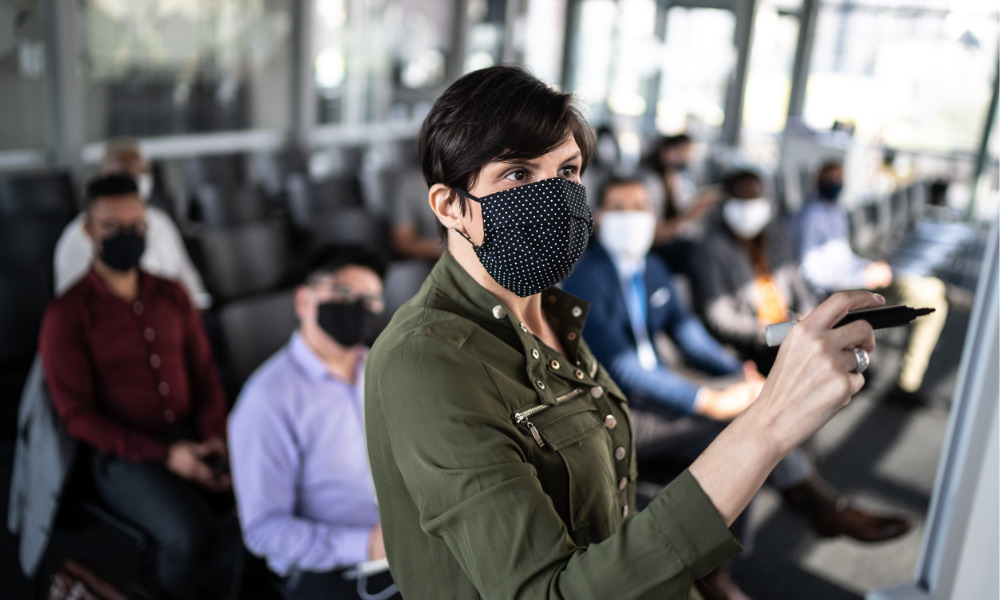Worker wellbeing is key in any industry

COVID has really shone a light on the importance of workplace health and safety. While some businesses and organizations may already have a strong grasp on the ins and outs of OHS, others may be at the start of their journey.
Worker wellbeing is key in the workplace, not only for safety reasons but because numerous studies have shown that improving health and safety can positively impact productivity and profits.
And though each workplace certainly has its own requirements, there are some basic things that employers can do to encourage a proactive safety culture within their organizations.
1. Offer a complete training on workplace safety. First aid, fire safety, cyber safety, etc. As well as basic training, consider what an employee will need to be as safe and comfortable in the workplace as possible. Not all workers need to be schooled extensively on first aid, but a basic understanding is good. Training depends on the work environment – a construction worker may need to learn about machine safeguarding while an office worker will most likely not. Conversely, workers in sectors such as finance or banking could benefit from cybersecurity training. Don’t scrimp on the right kind of training.
2. Educate new employees on the company’s workplace safety policies. Each workplace is its own microcosm, and while some policies are universal (though actual requirements may differ in each province), new employees should be educated on how things work in their specific environment. Not only is this essential for employee wellbeing, but it could also avoid potentially disastrous miscommunications down the line.
3. Make safety information accessible to employees. Drawing up a list of pertinent safety information is great, but it’s not much use if employees don’t have access to it. Make the information as clear and accessible to employees as possible. If working in a multilingual setting, ensure that the information is available in the language(s) spoken by the workers (and if possible, for employees with visual impairment information should also be available in braille – or as an audio recording).
4. Inspect workplace environment. Regular inspections are an essential part of workplace safety. It helps ensure that the workplace is running smoothly, and helps pinpoint areas of improvement. The workplace is constantly evolving, and inspections are a proactive way of keeping track of changes to be made.
5. Investigate incidents to avoid future accidents. Similarly to the previous point, investigating incidents as well as near-misses helps to avoid future accidents. Stay aware of the hazards in the workplace to mitigate or eliminate potential risks.
6. Keep the work area clean. As we have seen during COVID, workplace cleanliness is a must. Optimal hygiene is a must for worker health. Certainly in settings such as hospitality or healthcare it is essential for client/patient wellbeing as well.
7. Post labels and signs. In the same vein, keeping workplaces clean usually entails the use of at the very least one or two chemical products. For any of these products, a Safety Data Sheet must be kept and made easily available to consult. Going back to the point about making safety information accessible to employees, signage must also be clear, visible and understandable by all employees.
8. Encourage stretching breaks. We now know how important good ergonomics is for worker wellbeing. Workers are often found to be sitting too much, standing too much or engaging in activities (such as repetitive tasks) that can have a negative impact on their health in the long run. One very basic things that employers can do to help is encourage workers to stretch throughout the day to avoid potential musculoskeletal disorders (MSDs).
9. Work together with occupational clinicians. It can be hard to know where to start with employee health and safety, luckily there are a number of professionals and consultants out there who can help you grasp the basics.
10. Reward safe behaviour. Employers can put as many initiatives in place as they want but – to a certain extent – it is up to employees to enact them. Positive reinforcement is a great way to encourage workers to keep up with optimal health and safety practices.
11. Have regular meetings about workplace safety. Communication is key – this is something that any health and safety professional is key. Keeping an open line between leadership and employees lets them know that you care, helps keep them abreast of any changes and gives workers a forum to share their concerns.
12. Have the right tools and equipment. Of course, having the right equipment is key. For example, going back to the topic of ergonomics, things like optimized keyboards or desk chairs can greatly improve posture and overall hygiene for office workers. Similarly, for more dangerous activities like working at heights, having the correct equipment absolutely makes a difference between life or death (or seriously injury).





